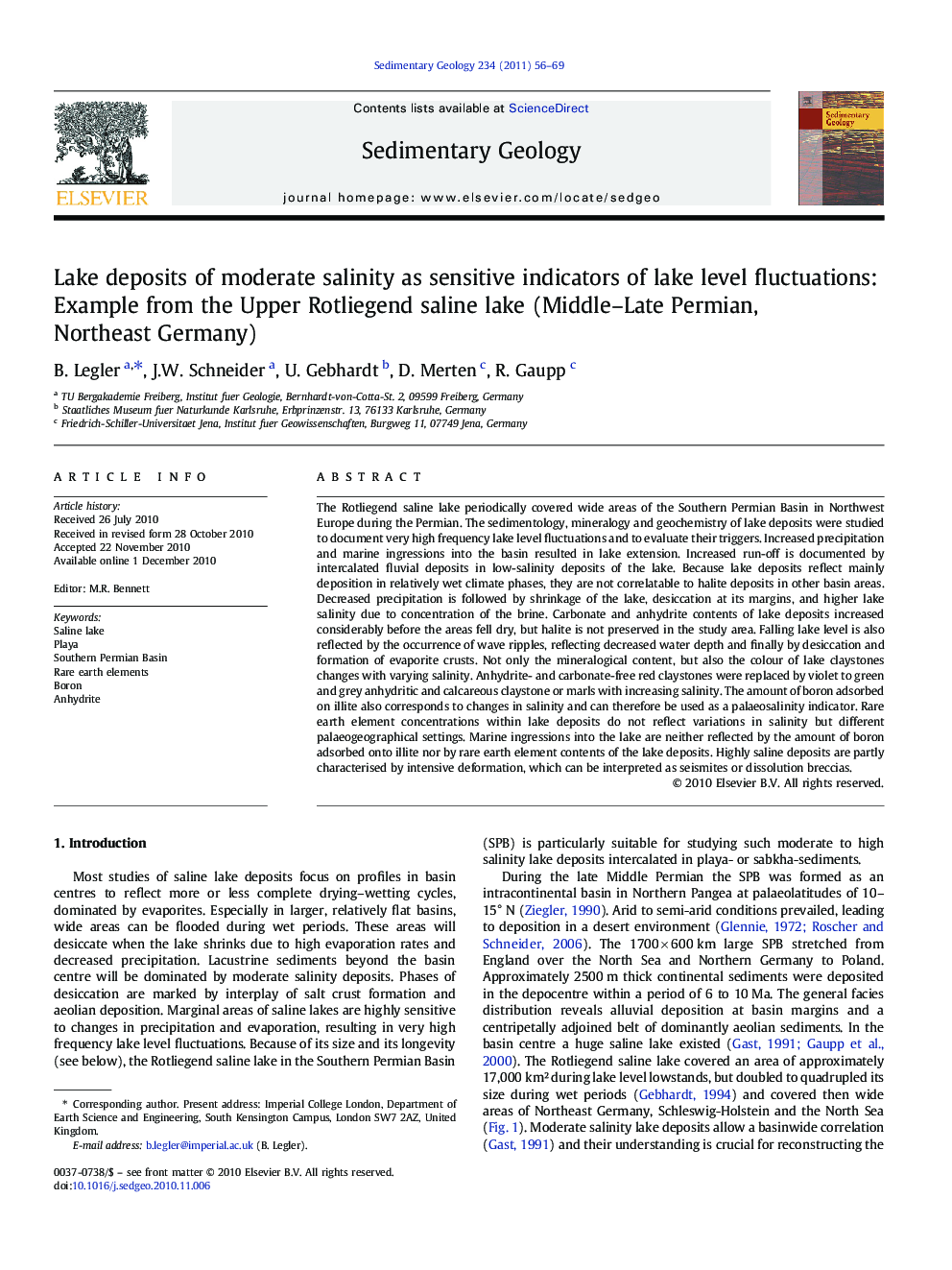| کد مقاله | کد نشریه | سال انتشار | مقاله انگلیسی | نسخه تمام متن |
|---|---|---|---|---|
| 4690019 | 1636114 | 2011 | 14 صفحه PDF | دانلود رایگان |

The Rotliegend saline lake periodically covered wide areas of the Southern Permian Basin in Northwest Europe during the Permian. The sedimentology, mineralogy and geochemistry of lake deposits were studied to document very high frequency lake level fluctuations and to evaluate their triggers. Increased precipitation and marine ingressions into the basin resulted in lake extension. Increased run-off is documented by intercalated fluvial deposits in low-salinity deposits of the lake. Because lake deposits reflect mainly deposition in relatively wet climate phases, they are not correlatable to halite deposits in other basin areas. Decreased precipitation is followed by shrinkage of the lake, desiccation at its margins, and higher lake salinity due to concentration of the brine. Carbonate and anhydrite contents of lake deposits increased considerably before the areas fell dry, but halite is not preserved in the study area. Falling lake level is also reflected by the occurrence of wave ripples, reflecting decreased water depth and finally by desiccation and formation of evaporite crusts. Not only the mineralogical content, but also the colour of lake claystones changes with varying salinity. Anhydrite- and carbonate-free red claystones were replaced by violet to green and grey anhydritic and calcareous claystone or marls with increasing salinity. The amount of boron adsorbed on illite also corresponds to changes in salinity and can therefore be used as a palaeosalinity indicator. Rare earth element concentrations within lake deposits do not reflect variations in salinity but different palaeogeographical settings. Marine ingressions into the lake are neither reflected by the amount of boron adsorbed onto illite nor by rare earth element contents of the lake deposits. Highly saline deposits are partly characterised by intensive deformation, which can be interpreted as seismites or dissolution breccias.
Journal: Sedimentary Geology - Volume 234, Issues 1–4, 1 March 2011, Pages 56–69